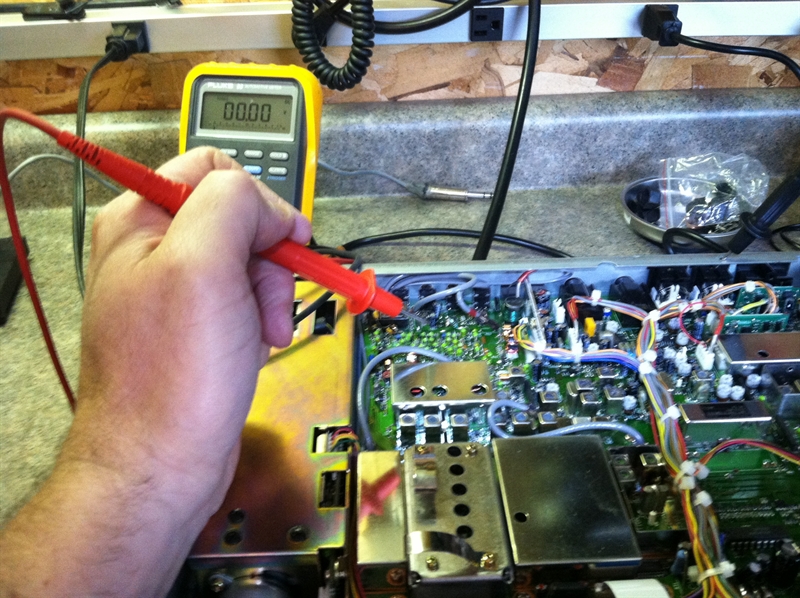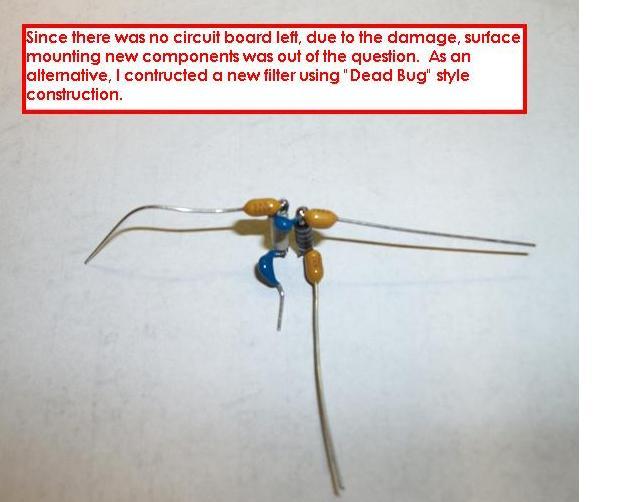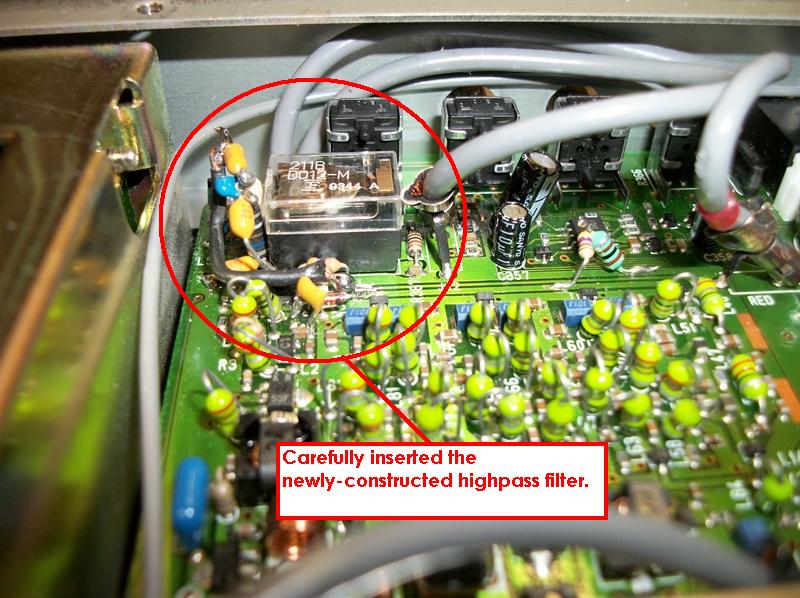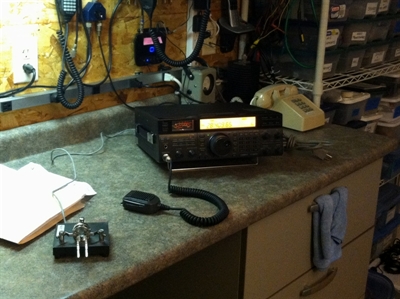I purchased an Icom IC-736 HF transciever for $100 from a friend, well aware that the radio did not work. This radio was sent to Icom for repair and it was returned unrepaired. Icom stated that the radio could not be repaired and that the motherboard was obsolete (they normally would change out the motherboard, and not repair the damage). This sounded like a challenge to me and I don’t give up too easily, so I purchased the radio as a project. I was bound and determined to repair this radio, and I did!

The receiver was dead when I first plugged in the radio. I removed the bottom cover to expose the receiver circuit board. Much to my amazement, the circuit board was “crunchy” and had a strong oder of smoked electronic carnage. WOW! I quickly came to the conclusion that damage to this extent had to be the result of a lightening strike. The receiver front-end was absolutely cooked, the circuit board was carbonized, and the surface-mounted components in the vicinity of the damage were missing (vaporized). There was even evidence of an electrical arc to the chassis in the same corner. My initial thought was that there was no hope for this radio, but I took a deep breathe and pressed on. Like I said, I do not give up too easily.


Most of the damage was to the highpass filter in the receiver frontend, which was basically…missing. There was nothing left to the circuit board traces, the fiberglass board was carbonized, and the components were gone. Looking at this photo, it appears that I had a lot of room to work with, but in reality, this area was very cramped and the surface mounted components (that weren’t there) were about the size of the tip of a pencil lead. The area was about 1/4 x 1/4 inch square. Try rebuilding a highpass filter in a small area like that, and then between the chassis wall and a relay. It was a challenge to rebuild this section of the radio.

There was no continuity in the receiver frontend. I was measuring the extent of the damage and realizing that traces in the receiver circuit were completely missing, so other parts of the receiver circuit were also damaged; not just the highpass filter section. It was later determined that the bandpass filters (for each amateur band) were burned open, and that the receiver preamplifier circuit was also burned open. The damage was much worse than it initially appeared. Most people would have given up at this point, but not I. I continued to press on.

I purchased small, discrete components from Digikey, and came up with the idea of reconstructing the highpass filter using “Dead Bug” style circuit construction. Since there was nothing to solder to– the copper traces left the board– I had no other choice but to use this method. I figured that since this is an HF radio, and by keeping the leads very short, a circuit constructed in this manner would work just fine, with no noticeable effects. I was correct in my assumption; the circuit worked great!

The newly constructed highpass filter was carefully inserted to the left of the relay (the attenuation relay). Once everything was in position and fit properly, the connections were bridged with solder. At this point, I tested the circuit to make sure it was functioning properly (with a signal generator and a spectrum analyzer), by sweeping the frequency response. Everything was working correctly, and the filter rejected the AM broadcast band, just as it was designed to do.

Finally, once the receiver input circuitry was reconstructed and tested, I had to go through each bandpass filter to replace burned out switching diodes. The switching diodes were burned out for all the HF bands and the AM broadcast band. I ordered the pin diodes from Icom and installed the new components with a surface-mount soldering station (a hot air machine with a tiny tip). Using tweezers and 2.5X bifocal spectacles (I do not wear glasses, but when working with surface mounted components, one must wear bifocals), each pin diode was carefully replaced. Once completed, I then repaired the nonfunctional preamplifier. It too was burned out, but fortunately only the pin diodes were popped; not the transistor.

After about 40 hours of work, on-and-off, the radio is finally working. I tested the radio with a communication service monitor and determined that it is operating per the specifications in the service manual. The repair was a success. The Icom IC-736 is now my camping radio, and in July of 2013, I took the radio with me in the camper and used it to get on HF while relaxing at the Fort Wilkins campground in Copper Harbor, Michigan.

